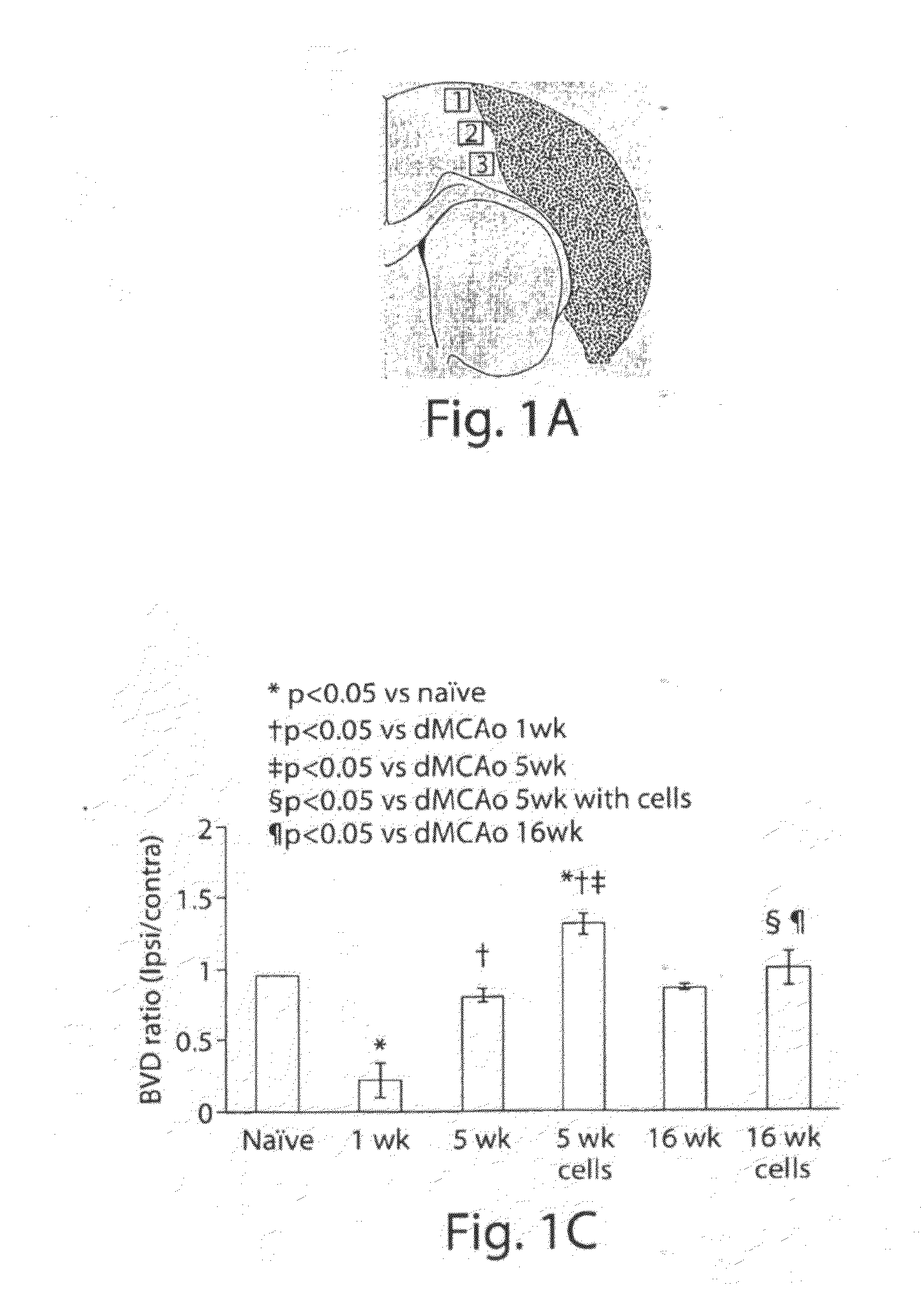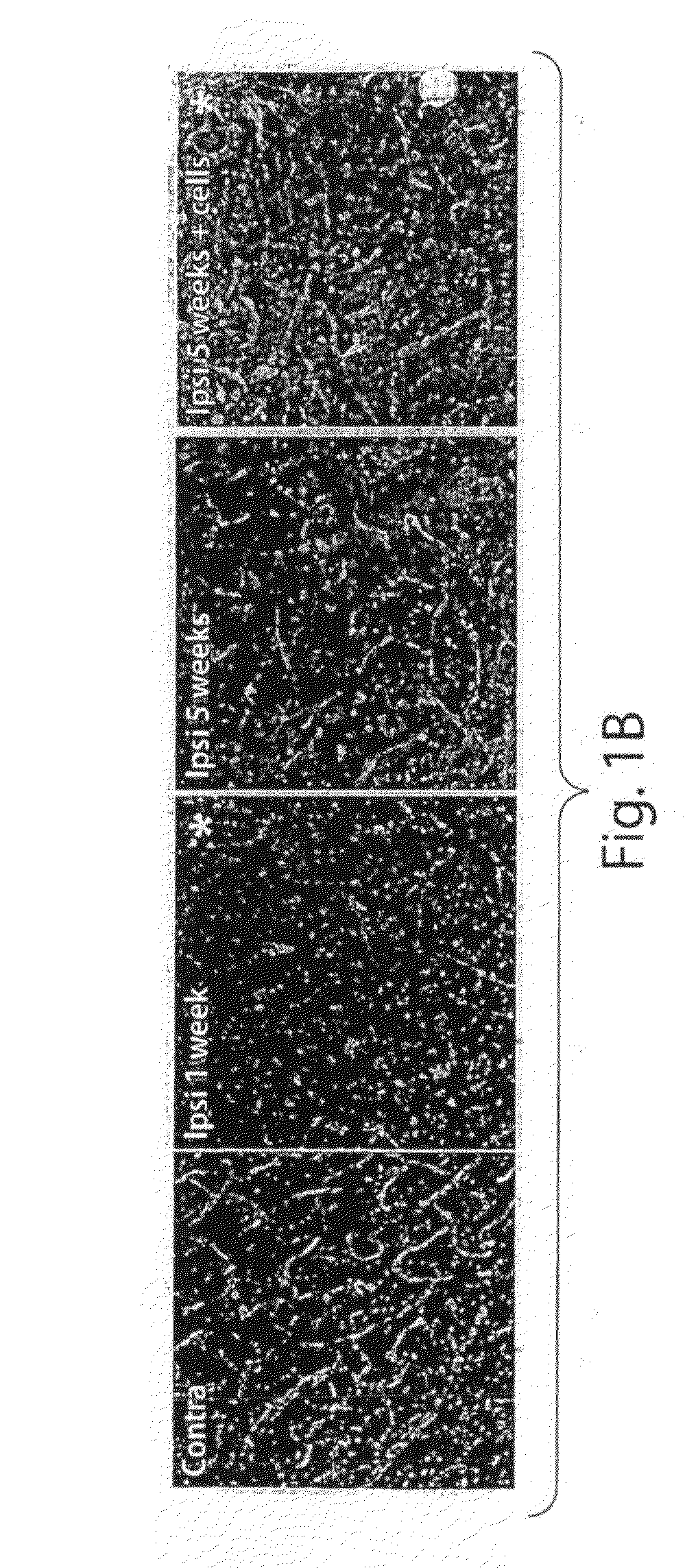ISCHEMIA-INDUCED NEOVASCULARIZATION IS ENHANCED BY hCNS-SC TRANSPLANTATION
a technology of ischemia-induced neovascularization and hcns-sc, which is applied in the field of methods, can solve the problems of limited efficacy, no proven stroke therapy, damage or loss of blood vessels, etc., and achieves the effects of enhancing neovascularization, increasing vasculogenesis, and increasing angiogenesis
- Summary
- Abstract
- Description
- Claims
- Application Information
AI Technical Summary
Benefits of technology
Problems solved by technology
Method used
Image
Examples
Embodiment Construction
Central Nervous System Stem Cells
[0016]During development of the central nervous system (“CNS”), multipotent precursor cells (also known as neural stem cells) proliferate and give rise to transiently dividing progenitor cells that eventually differentiate into the cell types that compose the adult brain. Neural stem cells are classically defined as having the ability to self-renew (i.e., form more stem cells), to proliferate, and to differentiate into multiple different phenotypic lineages, including neurons, astrocytes and oligodendrocytes.
[0017]The non-stem cell progeny of neural stem cells are typically referred to as “progenitor cells”. Progenitor cells are capable of giving rise to various cell types within one or more lineages. Thus, the term “neural progenitor cell” refers to an undifferentiated cell derived from a neural stem cell. It is not itself a stem cell. Some progenitor cells can produce progeny that are capable of differentiating into more than one cell type. A disti...
PUM
 Login to View More
Login to View More Abstract
Description
Claims
Application Information
 Login to View More
Login to View More - R&D
- Intellectual Property
- Life Sciences
- Materials
- Tech Scout
- Unparalleled Data Quality
- Higher Quality Content
- 60% Fewer Hallucinations
Browse by: Latest US Patents, China's latest patents, Technical Efficacy Thesaurus, Application Domain, Technology Topic, Popular Technical Reports.
© 2025 PatSnap. All rights reserved.Legal|Privacy policy|Modern Slavery Act Transparency Statement|Sitemap|About US| Contact US: help@patsnap.com



